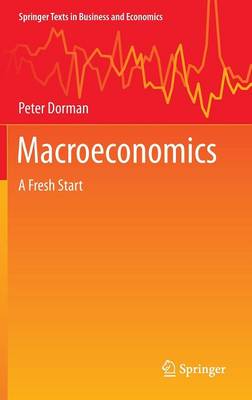Springer Texts in Business and Economics
2 total works
The world has changed dramatically in recent years and so has the field of economics, but many introductory economics textbooks have remained stuck in the past. This book provides a new beginning for the study of macroeconomics, fundamentally international in its approach and emphasizing current debates and research trends. The first, mostly descriptive half of the book presents the main macroeconomic and financial patterns observed across the world, the institutions that govern national economies and the policy options available to decision-makers. In the second half, different schools of thought in macroeconomics are introduced with an emphasis on their underlying assumptions, so that students can judge for themselves how well they apply in real-world situations.
Throughout the book, the post-2007 financial crisis is a continuing focus and financial markets are fully integrated in the analysis. Policy debates are viewed in light of political economy considerations, both domestic and international. The book’s style focuses on in-depth explanations and supports teaching methodologies based on critical thinking and active learning, encouraging students to relate to current discussions, especially those taking place online.
Throughout the book, the post-2007 financial crisis is a continuing focus and financial markets are fully integrated in the analysis. Policy debates are viewed in light of political economy considerations, both domestic and international. The book’s style focuses on in-depth explanations and supports teaching methodologies based on critical thinking and active learning, encouraging students to relate to current discussions, especially those taking place online.
The world has changed dramatically in recent years and so has the field of economics, but many introductory economics textbooks have remained stuck in the past. This book provides a new beginning for the study of microeconomics, emphasizing current debates and research trends. It is international in outlook and reflects the shift toward empirical methods, as well as the study of institutions and economic behavior. It is also written to fit in with an approach to teaching based on active learning and critical thinking. Mainstream material is still covered, but within a new context, making it more relevant, realistic and responsive to the deeper questions economists are now asking about theory and policy. Economics as a discipline is viewed from a broad perspective that takes into account new developments at the intersections with psychology, political science, the natural sciences and philosophy. Economics as presented in this text is less sure that it has all the answers, but it is more interesting, application-oriented and open to new ideas.

